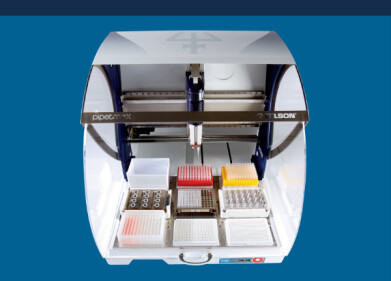Laboratory Products
How Many Strains of SARS-CoV-2 Exist?
Dec 07 2020
New research from Italy has revealed there are at least six strains of SARS-CoV-2, the virus that has swept the globe and infected more than 67 million people worldwide. Working from laboratories at the University of Bologna, a team of researchers identified minimal variability and mutation rates between the six strains, a positive trait that increases the chances of developing effective vaccines.
G strain dominates Europe
Across Italy and Europe, strain G is the most common form of SARS-CoV-2. The strain is a variation of the original L strain that first appeared in Wuhan in late 2019. The sequencing-focussed study is one of the most detailed ever conducted on SARS-CoV-2, with the team analysing more than 48,000 coronavirus genomes identified by laboratory scientists around the world. The findings were published under the title ‘Geographic and Genomic Distribution of SARS-CoV-2 Mutations’ in the journal Frontiers in Microbiology, with study coordinator Federico Giorgi explaining how results were used to map the global spread of virus strains, as well as the development of mutations.
“The SARS-CoV-2 coronavirus is presumably already optimised to affect human beings, and this explains its low evolutionary change," says Giorgi, a researcher at the University of Bologna. “This means that the treatments we are developing, including a vaccine, might be effective against all the virus strains.”
Low mutation rate fuels optimism for effective vaccine
As well as G and L strain, mutated version of SARS-CoV-2 include S strain and V strain identified in January. By the end of February G strain had also mutated into separate strains known as GR and GH. The G family remains most prevalent, with Giorgi confirming it represents around 74% of all analysed gene sequences.
The results are positive, with Giorgi and his team identifying just seven mutations per sample. This is significantly lower than the average variability rate of common influenza, which is more than 50% higher. "Rare genomic mutations are less than 1% of all sequenced genomes," says Giorgi. "However, it is fundamental that we study and analyse them so that we can identify their function and monitor their spread. All countries should contribute to the cause by giving access to data about the virus genome sequences."
From Italy to Slovenia, European universities are pioneers of coronavirus. Find out more about the latest developments in ‘Slovenia Joins the World’s Flagship Neutron Facility, ILL’ which spotlights the newest addition to the coveted Institut Laue-Langevin facility.
Digital Edition
ILM 49.5 July
July 2024
Chromatography Articles - Understanding PFAS: Analysis and Implications Mass Spectrometry & Spectroscopy Articles - MS detection of Alzheimer’s blood-based biomarkers LIMS - Essent...
View all digital editions
Events
ACS National Meeting - Fall 2024
Aug 18 2024 Denver, CO, USA
Aug 25 2024 Copenhagen, Denmark
Aug 28 2024 Phnom Penh, Cambodia
Sep 04 2024 Chiba, Tokyo, Japan
Sep 04 2024 University of Warwick, Coventry, UK





24_06.jpg)












